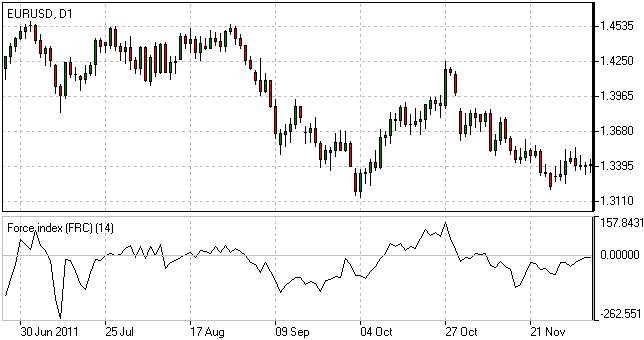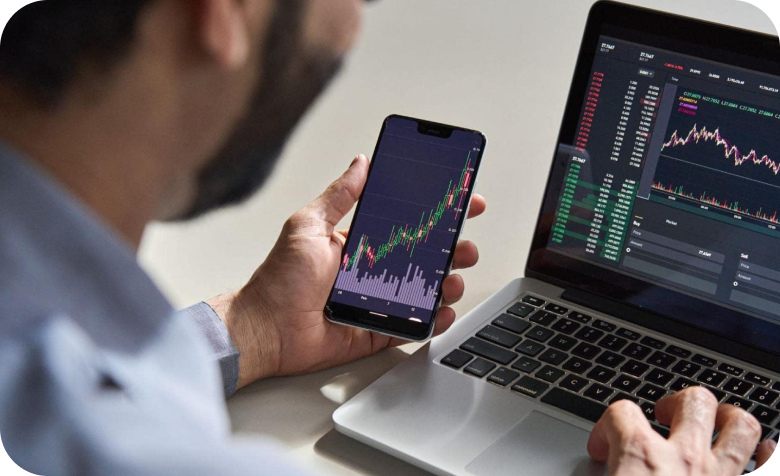- Education
- Forex Technical Analysis
- Technical Indicators
- Oscillators
- Force Index
Force Index Indicator - What is Force Index
How to Use Force Index
The Force Index allows to identify the reinforcement of different time scale trends:
- The indicator should be made more sensitive by decreasing its period for short trends.
- The indicator should be smoothed by increasing its period for longer trends.
The Force Index may strongly imply a trend change:
- Break-down of an uptrend when the indicator's value is changing from positive to negative and price and indicator show divergence.
- Break-down of a downtrend when the indicator's value is changing from negative to positive and price and indicator show convergence.
Together with a trend-following indicator the Force Index can help identify trend corrections:
- An uptrend correction when the indicator bounces off the low.
- A downtrend correction when the indicator slides from a pike.

Force Index Indicator
Force Index Formula (Calculation)
The Force Index is calculated as the difference between the current and previous closing prices multiplied by the current trading volume. The longer 13-period Force Index shows the main trend in the market.
Force Index(1) = {Close (current period) - Close (prior period)} x Volume
Force Index(13) = 13-period EMA of Force Index(1)How to use Force Index in trading platform
Forex Indicators FAQ
What is a Forex Indicator?
Forex technical analysis indicators are regularly used by traders to predict price movements in the Foreign Exchange market and thus increase the likelihood of making money in the Forex market. Forex indicators actually take into account the price and volume of a particular trading instrument for further market forecasting.
What are the Best Technical Indicators?
Technical analysis, which is often included in various trading strategies, cannot be considered separately from technical indicators. Some indicators are rarely used, while others are almost irreplaceable for many traders. We highlighted 5 the most popular technical analysis indicators: Moving average (MA), Exponential moving average (EMA), Stochastic oscillator, Bollinger bands, Moving average convergence divergence (MACD).
How to Use Technical Indicators?
Trading strategies usually require multiple technical analysis indicators to increase forecast accuracy. Lagging technical indicators show past trends, while leading indicators predict upcoming moves. When selecting trading indicators, also consider different types of charting tools, such as volume, momentum, volatility and trend indicators.
Do Indicators Work in Forex?
There are 2 types of indicators: lagging and leading. Lagging indicators base on past movements and market reversals, and are more effective when markets are trending strongly. Leading indicators try to predict the price moves and reversals in the future, they are used commonly in range trading, and since they produce many false signals, they are not suitable for trend trading.
Use indicators after downloading one of the trading platforms, offered by IFC Markets.

Not sure about your Forex skills level?
Take a Test and We Will Help You With The Rest


